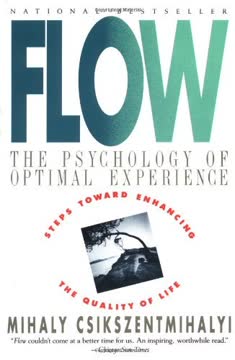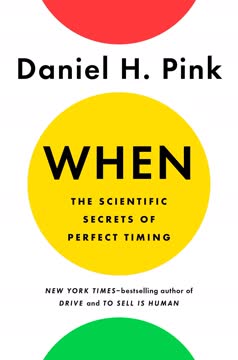重点摘要
1. 内在动机胜过外在奖励对于复杂任务
“当金钱被用作某种活动的外部奖励时,受试者对该活动的内在兴趣会减弱。”
胡萝卜和大棒已经过时。 传统的基于外在激励(如金钱或惩罚)的奖励系统对于现代职场中占主导地位的复杂、创造性任务无效。Edward Deci等人的研究表明,对于需要认知技能的任务,较高的奖励反而导致较差的表现。
内在动机是关键。 当人们被内部因素如享受、好奇心和个人成长驱动时,他们表现得更好。这对于需要解决问题和创造力的非例行、概念性工作尤为重要。像谷歌和3M这样的公司通过允许员工花部分时间在自我导向的项目上,激发了创新,如Gmail和便利贴。
索耶效应说明了这一原则。 以汤姆·索耶的刷墙技巧命名,表明将工作变成游戏可以提高动机和表现。相反,给一个有趣的任务增加外部奖励会让它感觉像工作,从而降低动机和创造力。
2. 自主性、掌握和目标驱动人类行为
“人类有一种内在的驱动力,渴望自主、自我决定和与他人联系。当这种驱动力被释放时,人们会取得更多成就,生活得更丰富。”
自主性促进参与。 当人们对自己的任务、时间、团队和技术有控制权时,他们会茁壮成长。像Atlassian和Best Buy这样的公司实施了“FedEx Days”和“结果导向的工作环境(ROWE)”,允许员工在自我导向的项目上工作或管理自己的时间表,从而提高了生产力和工作满意度。
掌握激励改进。 对于重要事物的改进欲望是人类行为的强大驱动力。这解释了为什么人们会在没有外部奖励的情况下从事具有挑战性的爱好或追求艰难的职业道路。提供技能发展和成长的机会对于保持工作场所的动机至关重要。
目标提供方向。 将工作与更大的事业或意义联系起来可以增强动机和表现。那些明确表达超越利润目标的公司往往拥有更投入的员工和更好的长期成功。这对于进入职场的年轻一代尤为重要,他们优先考虑有意义的工作而非传统奖励。
3. 传统管理方法扼杀创造力和生产力
“管理不是走来走去看人们是否在办公室,而是创造条件让人们发挥最佳工作。”
命令与控制已过时。 基于密切监督和标准化流程的传统管理方法不适合知识工作和创造性任务。这些方法会减少自主性,扼杀创新,降低内在动机。
赋权是关键。 前瞻性组织正在转向促进自我导向和创造力的环境。这包括:
- 给予员工更多对工作流程的控制权
- 鼓励实验和冒险
- 提供建设性反馈而非惩罚措施
- 关注结果而非面子时间或严格的时间表
信任带来更好的结果。 当管理者信任员工管理自己的时间和任务时,往往会带来更高的生产力和工作满意度。像Zappos这样的公司实施了自我管理系统,允许团队自我组织并自主决策,从而提高了客户服务和员工参与度。
4. “如果-那么”奖励可能适得其反并降低表现
“奖励可以带来短期的提升——就像一杯咖啡可以让你再工作几个小时。但效果会消失,更糟的是,会降低一个人继续项目的长期动机。”
条件奖励缩小了焦点。 “如果-那么”奖励(例如,“如果你做X,那么你会得到Y”)对于简单、直接的任务可能有效。然而,对于需要创造力或解决问题的复杂任务,它们实际上会通过将思维限制在狭窄的、以奖励为中心的路径上来阻碍表现。
短期收益,长期损失。 虽然外在奖励可能会在短期内提升动机或表现,但它们往往会随着时间的推移降低内在动机。这可能导致:
- 创造力和创新减少
- 奖励取消后工作质量下降
- 为了获得奖励而增加不道德行为的可能性
“如果-那么”奖励的替代方案。 组织可以:
- 提供有意义的、非控制性的反馈
- 在任务完成后提供意外的“现在”奖励
- 专注于创造支持自主性、掌握和目标的环境
5. 流状态对于高峰表现和满意度至关重要
“人们生活中最令人满意的体验是他们处于流状态时。”
流是最佳体验。 心理学家Mihaly Csikszentmihalyi将“流”定义为一种深度参与和享受的状态,在这种状态下,人们会忘记时间和自我意识。当技能与挑战相匹配,目标明确,反馈即时时,这种状态就会出现。
在工作和生活中促进流。 为了促进流体验:
- 设定明确的目标并提供即时反馈
- 平衡挑战与技能(适度任务)
- 最小化干扰和中断
- 允许任务执行的自主性
流带来掌握和满意。 经常的流体验不仅能提高表现,还能促进整体生活满意度和个人成长。创造有利于流状态的条件的组织可能会看到生产力、创造力和员工幸福感的提高。
6. 掌握需要接受挑战并将能力视为可改进的
“掌握是一种心态:它需要有能力将你的能力视为无限可改进的。”
成长心态至关重要。 斯坦福大学心理学家Carol Dweck的研究表明,拥有“成长心态”(相信能力可以发展)的人比拥有“固定心态”(相信能力是天生的且不可改变的)的人取得更多成就。接受挑战并将失败视为学习机会是掌握发展的关键。
刻意练习推动改进。 实现掌握需要:
- 设定具体的改进目标
- 寻求持续的、批判性的反馈
- 关注弱点领域
- 超越舒适区
- 在挫折面前坚持不懈
掌握是一段旅程,而不是一个目的地。 真正的掌握是渐近的——它可以接近但永远无法完全达到。这种持续的追求提供了持续的动机和满足感,因为总有改进的空间和新的挑战需要应对。
7. 目标驱动的工作带来更大的满足感和成功
“最深受动机驱动的人——更不用说那些最有生产力和满意度的人——将他们的愿望与比自己更大的事业联系在一起。”
目标最大化与利润并行。 强调目标与利润并行的组织往往会看到更好的长期结果。这包括:
- 阐明超越财务收益的明确使命
- 将个人角色与更大的组织目标联系起来
- 允许员工追求目标驱动的项目
个人目标增强动机。 将工作与更大的目标或个人价值观联系起来的个人往往更投入和有韧性。这可以包括:
- 寻找与个人价值观一致的工作
- 找到使当前工作更有意义的方法
- 参与志愿服务或提供目标的副项目
目标驱动的组织吸引人才。 尤其是在年轻一代中,具有强烈目标感的公司对潜在员工更具吸引力。这可以导致更投入的员工队伍和更好的整体表现。
8. 科学与商业实践之间的不匹配阻碍进步
“科学所知道的与商业所做的之间存在不匹配。”
过时的实践仍在继续。 尽管几十年的研究表明胡萝卜和大棒激励的局限性,许多企业仍然依赖这些方法。这种不匹配导致次优表现和员工满意度下降。
变革的障碍包括:
- 惯性和对新想法的抵制
- 对短期结果的关注
- 对人类动机的误解
- 对失去控制的恐惧
弥合差距。 为了使商业实践与科学知识保持一致:
- 教育领导者现代动机研究
- 试验新的管理方法
- 衡量长期结果,而不仅仅是短期指标
- 培养持续学习和适应的文化
9. I型行为促进创新和长期成功
“I型行为更多地由内在欲望驱动,而不是外在的。它更关心活动本身的内在满足,而不是活动所带来的外部奖励。”
I型与X型行为。 I型(内在动机)个体往往比X型(外在动机)个体更具创造力、生产力和满意度。培养I型行为的组织更有可能在长期内创新和成功。
培养I型行为:
- 提供任务、时间、团队和技术的自主权
- 提供技能发展和掌握的机会
- 将工作与更大的目标或意义联系起来
- 使用“现在”奖励而不是“如果-那么”奖励
- 鼓励实验和从失败中学习
I型行为是自我强化的。 随着个体体验到内在动机的好处,他们更有可能寻求和创造支持它的环境。这可以导致一个良性循环,增加参与度、创造力和成功。
最后更新日期:
FAQ
What's "Drive: The Surprising Truth About What Motivates Us" about?
- Core Premise: The book explores the science of motivation, challenging traditional views that rely on external rewards and punishments.
- Three Elements: It introduces a new framework for motivation based on autonomy, mastery, and purpose.
- Historical Context: The book traces the evolution of motivational theories from basic survival instincts to complex intrinsic motivations.
- Practical Application: It provides insights into how these motivational principles can be applied in business, education, and personal development.
Why should I read "Drive: The Surprising Truth About What Motivates Us"?
- Scientific Insights: The book is grounded in decades of research in psychology and behavioral science, offering evidence-based insights.
- Practical Advice: It provides actionable strategies for enhancing motivation in various settings, from workplaces to schools.
- Challenging Norms: It questions conventional wisdom about motivation, encouraging readers to rethink how they approach tasks and goals.
- Broader Impact: Understanding these principles can lead to more fulfilling personal and professional lives.
What are the key takeaways of "Drive: The Surprising Truth About What Motivates Us"?
- Intrinsic Motivation: True motivation comes from within, driven by autonomy, mastery, and purpose rather than external rewards.
- Autonomy: People perform better when they have control over their tasks, time, techniques, and team.
- Mastery: The pursuit of becoming better at something that matters is a key driver of motivation.
- Purpose: Connecting work to a larger cause enhances motivation and satisfaction.
How does Daniel H. Pink define "Type I" and "Type X" behavior?
- Type I Behavior: Driven by intrinsic motivations, focusing on the inherent satisfaction of the activity itself.
- Type X Behavior: Driven by extrinsic rewards, focusing on the external outcomes of the activity.
- Long-term Success: Type I behavior leads to greater long-term success and personal fulfillment.
- Adaptability: Type I behavior can be cultivated, regardless of one's starting point.
What is the "Sawyer Effect" as described in "Drive"?
- Concept Origin: Named after Tom Sawyer, it describes how rewards can turn play into work.
- Negative Aspect: External rewards can diminish intrinsic motivation and make enjoyable tasks feel like chores.
- Positive Aspect: Conversely, focusing on mastery can transform work into play, enhancing engagement.
- Application: Understanding this effect can help design better motivational strategies in various settings.
How does "Drive" suggest we should approach compensation and rewards?
- Baseline Rewards: Ensure fair and adequate compensation to take money off the table as a motivator.
- Noncontingent Rewards: Use "now that" rewards, which are unexpected and given after task completion, to avoid undermining intrinsic motivation.
- Fairness and Transparency: Compensation should be internally and externally fair to prevent demotivation.
- Focus on Work: The goal is to allow individuals to focus on the work itself rather than the financial incentives.
What role does "autonomy" play in motivation according to "Drive"?
- Core Element: Autonomy is essential for fostering intrinsic motivation and engagement.
- Four Aspects: It includes autonomy over task, time, technique, and team.
- Impact on Performance: Autonomy leads to higher job satisfaction and better performance.
- Organizational Examples: Companies that embrace autonomy, like Google and Atlassian, often see increased innovation and productivity.
How does "Drive" explain the concept of "mastery"?
- Continuous Improvement: Mastery involves the desire to get better at something that matters.
- Flow State: Achieving mastery often involves reaching a state of flow, where challenges match one's abilities.
- Effort and Grit: Mastery requires sustained effort and perseverance over time.
- Asymptote of Mastery: Full mastery is never fully attainable, making the pursuit both challenging and rewarding.
What is the "purpose motive" in "Drive"?
- Beyond Profit: Purpose involves doing something that serves a greater cause beyond oneself.
- Organizational Shift: Companies are increasingly recognizing the importance of purpose alongside profit.
- Individual Fulfillment: Purpose-driven individuals report higher satisfaction and well-being.
- Generational Influence: Both baby boomers and millennials are driving the shift towards purpose in work and life.
What are some practical strategies from "Drive" for fostering motivation?
- FedEx Days: Encourage innovation by allowing employees to work on any project they choose for a day.
- 20 Percent Time: Allocate a portion of work time for employees to pursue their own projects.
- Autonomy Audits: Assess and increase the level of autonomy in your organization.
- DIY Report Cards: Encourage self-assessment and personal goal setting to enhance mastery.
What are the best quotes from "Drive" and what do they mean?
- "The secret to high performance isn't our biological drive or our reward-and-punishment drive, but our third drive—our deep-seated desire to direct our own lives, to extend and expand our abilities, and to live a life of purpose." This quote encapsulates the book's central thesis that intrinsic motivation is key to achieving high performance.
- "Control leads to compliance; autonomy leads to engagement." This highlights the importance of autonomy in fostering genuine engagement and motivation.
- "Mastery is an asymptote." This metaphor suggests that while mastery is never fully attainable, the pursuit itself is what drives us forward.
- "Purpose provides activation energy for living." This emphasizes the role of purpose in energizing and motivating individuals.
How can "Drive" be applied in educational settings?
- Intrinsic Motivation: Focus on fostering students' intrinsic motivation rather than relying on grades and rewards.
- Autonomy in Learning: Allow students to have a say in their learning process and encourage self-directed projects.
- Mastery-Oriented Tasks: Design assignments that challenge students appropriately and promote mastery.
- Purposeful Education: Help students connect their learning to real-world applications and larger goals.
评论
《驱动力》因其对内在动机的探讨而获得了大多数积极的评价。读者们认为这本书见解深刻,提供了一个超越传统奖励的全新视角。许多人欣赏平克清晰的写作风格和实用的例子。一些批评者认为书中的观点有些重复或不完全原创。书中的核心信息——强调自主性、精通和目标作为关键的激励因素——在包括商业、教育和个人发展等各个领域引起了许多读者的共鸣。
Similar Books


















